As this academic year comes to an end, accounts get settled for the year 2017-2018. But there are many that are yet to be settled and ones from years past that will take a long time to be settled. This article by Kaushik Tekur looks at a few of these accounts that continue to unsettle the powers that be.
One of the most inspiring fights this year was through Anitha, and the thousands of students who stood behind her, demanding justice. Anitha was a 17-year old Dalit girl from Ariyalur who had scored 1,176 in the 2017 12th board exams with a medical cut off of 196.75 which would have easily ensured her a medical seat, if not for the discriminatory and unfair practice of NEET (National Eligibility cum Entrance Test). In the supreme court, Anitha challenged the Indian Government’s decision to conduct NEET for nation-wide admission to medical seats. The court was not sympathetic to her appeal and hence she was murdered by the Indian Government’s apathy and arrogance. At this juncture, Tamil Nadu’s opposition to NEET reached a new high with several thousands of students taking to the streets against this centralised common exam.
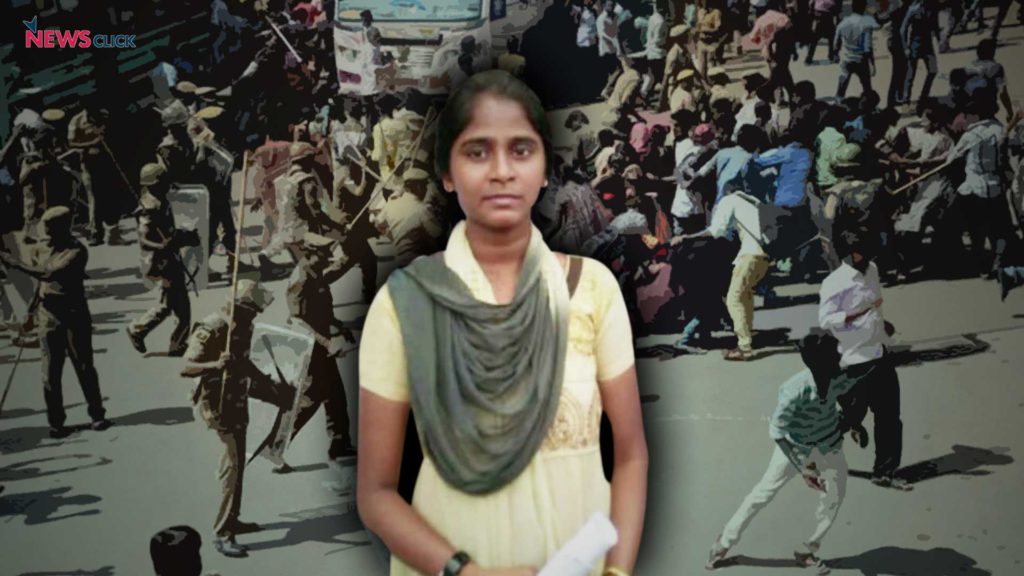
Anita was a 17-year old Dalit girl who had scored 1,176 in the 2017 12th board exams with a medical cut off of 196.75 which would have easily ensured her a medical seat, if not for the discriminatory and unfair practice of NEET. Photo Courtesy: NewsClick
The idea of a “level playing field” was again invoked to defend NEET, a common entrance test for everyone, ignoring the various social contexts in different regions from which students hail. The Brahminical notion of merit, which privileges a certain form of knowledge alongside a blatant refusal to acknowledge social privileges that give an edge to a few over the others, was vehemently opposed by popular protests across Tamil Nadu. It is interesting to note that WTO-GATS (General Agreement on Trade in Services), to which India has made several “offers” already, also works on the same logic.
In 1994 the World Trade Organization was formed out of the last round of the GATT (General Agreement on Trade and Tariffs). Both the WTO and its predecessor are global rules-based institutions where member countries negotiate trade agreements. Until the creation of WTO, trade agreements existed to reduce tariffs and non-tariff trade barriers for goods that were produced in one place and sold in another. Services such as transportation and financial services have historically been traded, but others such as healthcare and education have generally been exempted or seen as too localized to be traded. One of the three main ‘multilateral agreements’, or rules of the WTO, is the GATS (General Agreement on Trade in Services), the other two being the General Agreement on Trade and Tariff (GATT-1994) which includes Agreement on Agriculture, and Trade-Related Intellectual Property Rights (TRIPS). Trade in the Service sector, including Education, reduced now to one of the tradable services, is covered by the GATS. “Ironically, the trade in education is governed by GATS Council (Council for Trade in Services) in the same way as recreation clubs and night pubs, under the same set of rules but with some variations due to domestic regulations of member-nations”, according to this report published in The Companion. The ‘offers’ and ultimately the ‘commitments’ in ‘Market Access’ are to be given by a member country in ‘Mode-wise’ and ‘Sector-wise’ format for the operation of GATS in the country.
The GATS has remained a point of dispute ever since discussions began around it in 1986 with the Uruguay rounds. The irony arising from the contradiction in the notion of “Trade in Services” is never lost on us. Until then it was the General Agreement on Tariff and Trade (GATT) that tried regulating global trade. With the subsequent formation of WTO, and several rounds of discussions, notably the Doha rounds and Nairobi Conference, GATS has been subjected to severe scrutiny and critique. It aims at “progressive liberalization” (Part IV, GATS) of the market and eventually stop governments from subsidising services. In fact, it is worth noting that unlike GATT, GATS does not even provide the possibility of adopting automatic safeguard measures in services. Consequently, governments are prevented from reversing, even temporarily, commitments that have produced catastrophic consequences.
However, in a bid to sabotage global resistance to GATS over more than a decade now, several aspects of the WTO-GATS are already being implemented by insidious means in India and other nations across the world. While the Government of India wants everyone to believe that GATS has no opposition in India, students have resisted almost all of these moves.
Article II: Most Favoured Nation Treatment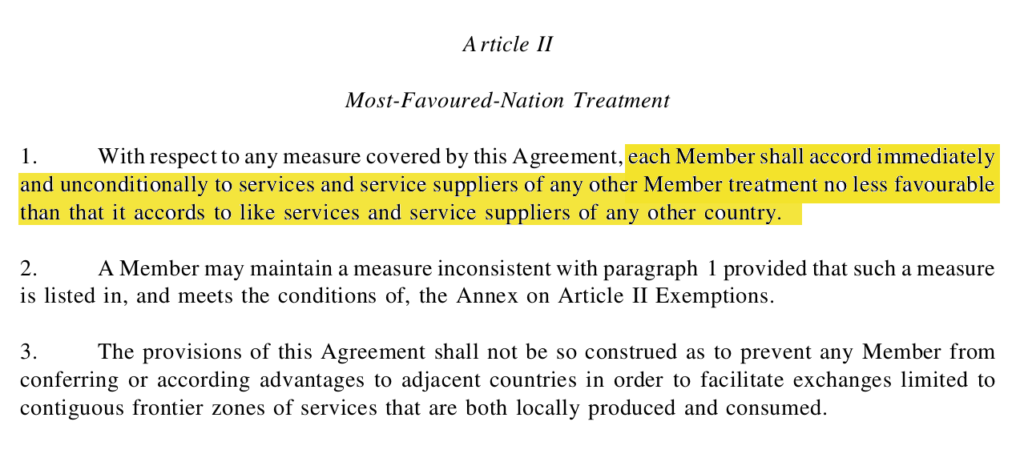
Of the two unconditional obligations under GATS to which all member countries of WTO are subjected, one is the “Most-Favoured Nation” treatment – MFN (Article II, GATS). This principle means that the Indian market will be open to “all” Foreign investors equally, without any discrimination. It is to be noted here that the US is the largest exporter of education, stemming from the hold the US has over the global market owing to the enormous wealth and power of its corporations – power amassed through decades of exploitation of its own citizens and “third-world” countries. It is telling when these same powers talk about “fairness of treatment” and non-discrimination when it comes to “favours” of member organisations, when their history is one of discrimination. This very step has been implemented through several measures, notably – NEET, which by centralising exams and syllabi, not only attacks the quasi-federal setup of the Indian nation, but also ensures CBSE-affiliated students continue to have a disproportionate edge over the others. The setting up of a National Testing Agency (NTA) for conducting competitive exams ends up making other bodies redundant and centralising all the authority. This form of homogenisation works to produce the kind of labourers required in the global market, as neoliberal logic of the global market finds it’s own niche with the Fascist desires of one language, one leader, one tax, etc.
Article III: Transparency
 It is ironic that WTO emphasizes on “transparency”, while most of it’s treaties and agreements are completely beyond public access and scrutiny. For instance, the details related to WTO-GATS agreements in Indian education, are present on the commerce ministry’s website and not on MHRD’s. The government made no attempt to seek people’s, students’, educationalists’ professors’, teachers’, parents’ and other stake holders’ opinions before making such a drastic move. The details are also not available in all the Indian languages. Nevertheless, along with MFN, transparency is another unconditional obligation under GATS (Article III, GATS). No member country of WTO can make policy changes without due notification to the WTO. All statistics are to be made available too. If GATS demands this on the one hand, Indian Universities have already been working diligently to patrol various activities of its students and professors in the name of safety, transparency and accountability. Surveillance and scrutiny are normalised under the name of transparency. Surveillance cameras are rapidly being installed in various locations on campuses. Students have resisted this move on several occasions, yet the practice continues. Protest gatherings are thoroughly monitored. In several campuses there are official orders mandating administration’s permission to put up posters, hold protest gatherings, etc. WTO will have the right to legally challenge any change in regulations and hold Governments responsible for aiding this process. Yet another feature of this project, is the so-called ”e-Governance” of Universities.
It is ironic that WTO emphasizes on “transparency”, while most of it’s treaties and agreements are completely beyond public access and scrutiny. For instance, the details related to WTO-GATS agreements in Indian education, are present on the commerce ministry’s website and not on MHRD’s. The government made no attempt to seek people’s, students’, educationalists’ professors’, teachers’, parents’ and other stake holders’ opinions before making such a drastic move. The details are also not available in all the Indian languages. Nevertheless, along with MFN, transparency is another unconditional obligation under GATS (Article III, GATS). No member country of WTO can make policy changes without due notification to the WTO. All statistics are to be made available too. If GATS demands this on the one hand, Indian Universities have already been working diligently to patrol various activities of its students and professors in the name of safety, transparency and accountability. Surveillance and scrutiny are normalised under the name of transparency. Surveillance cameras are rapidly being installed in various locations on campuses. Students have resisted this move on several occasions, yet the practice continues. Protest gatherings are thoroughly monitored. In several campuses there are official orders mandating administration’s permission to put up posters, hold protest gatherings, etc. WTO will have the right to legally challenge any change in regulations and hold Governments responsible for aiding this process. Yet another feature of this project, is the so-called ”e-Governance” of Universities.
When centers and departments don’t easily cater to such agenda to the fullest, or worse, try subverting such plans, they are quickly shut down. This year saw Ambedkar studies, Women studies centers, and other such centers face a drying out of funds. While it is true that even these departments have not historically escaped the problems generally encountered in academia, such as when it comes to ties between the academia and the Brahmin-Bania political-economic framework, it’s still important to recall that such centers are an outcome of a long history of struggles by the marginalised.
Article IV: Increasing Participation of Developing Countries
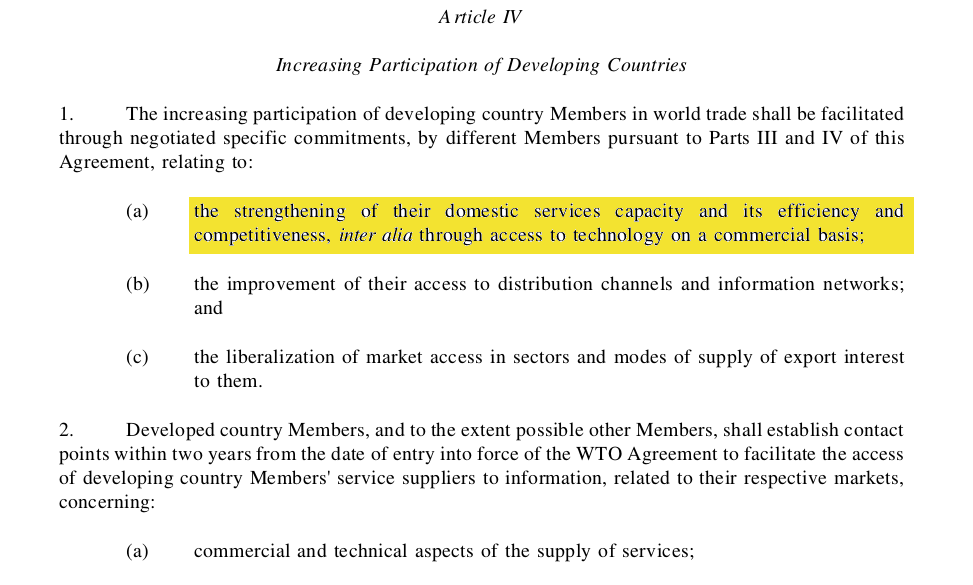 Article IV of GATS urges its member organizations to enable access to services “through technology on a commercial basis”, leading to practices such as uploading attendance and marks online. In many cases, Universities are holding workshops to instruct professors on the possibilities of conducting part of the classes at least online, sharing study material and lecture notes, marking attendance and making assessments online, etc. Revised attempts are being launched, in the garb of “spreading education through commercial means” to bring down the number of students and teachers from marginalised sections, whose increased active presence in such Institutions over the years has contributed to challenging caste hegemony within campus spaces. The latest attack on SC/ST reservation policy in placements is an example. On the other hand, the New Education Policy (which was originally envisaged by the UPA Government) had proposed a way to “evaluate” teacher performance through an MCQ based questionnaire. A teacher could easily be fired by this process. For instance, Hyderabad Central University recently set up a committee to look into the syllabus and question papers of Prof. K.Laxminarayana after an ABVP student called him a “bastard” for the usage of the word “saffronisation” in one of his question papers. There were also talks that the University administration wants to look into what the Dalit professors teach in their classrooms.
Article IV of GATS urges its member organizations to enable access to services “through technology on a commercial basis”, leading to practices such as uploading attendance and marks online. In many cases, Universities are holding workshops to instruct professors on the possibilities of conducting part of the classes at least online, sharing study material and lecture notes, marking attendance and making assessments online, etc. Revised attempts are being launched, in the garb of “spreading education through commercial means” to bring down the number of students and teachers from marginalised sections, whose increased active presence in such Institutions over the years has contributed to challenging caste hegemony within campus spaces. The latest attack on SC/ST reservation policy in placements is an example. On the other hand, the New Education Policy (which was originally envisaged by the UPA Government) had proposed a way to “evaluate” teacher performance through an MCQ based questionnaire. A teacher could easily be fired by this process. For instance, Hyderabad Central University recently set up a committee to look into the syllabus and question papers of Prof. K.Laxminarayana after an ABVP student called him a “bastard” for the usage of the word “saffronisation” in one of his question papers. There were also talks that the University administration wants to look into what the Dalit professors teach in their classrooms.
Students of HCU expressed their dissent against this targeting of politically active Dalit professors. Earlier, JNU students had fought against the imposition of attendance, thereby refusing to relent to the oppressive logic of “accountability”. Not unlike GATS, NEP documents were also never made and/or discussed in public adequately.
Article XV: Subsidies
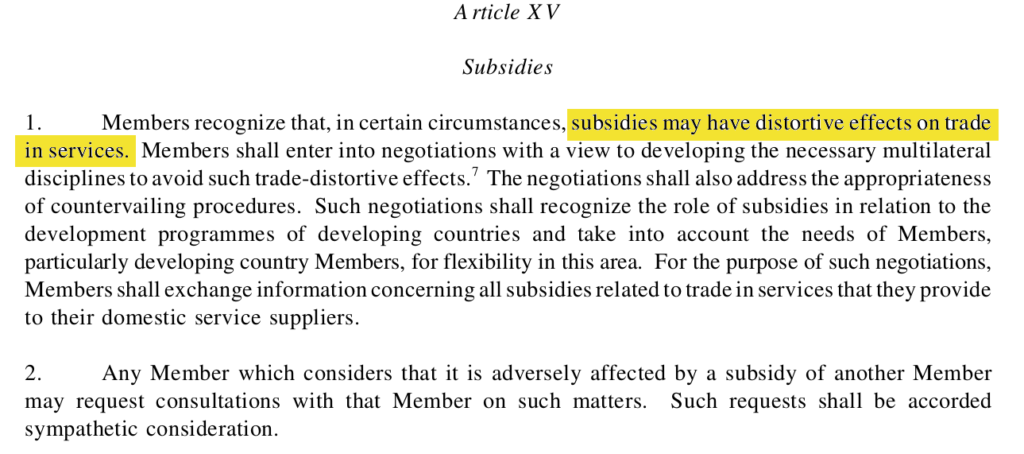
A couple of years ago, when MHRD announced the cancellation of non-NET fellowship just as tuition fees across Universities are getting hiked every year, again in line with GATS (Article XV: “Subsidies may have distortive effects on trade in services”), the students hit back, most recently the students of Ravenshaw University, Orissa, who started agitating against fee hike. The non-NET fellowships were restored subsequently, owing to mounting pressures from student movements across the country. Successive Indian Governments’ yearly allocation of funds for education has been usually not only lesser than the previous year but also grossly inadequate to meet the growing demands for education.
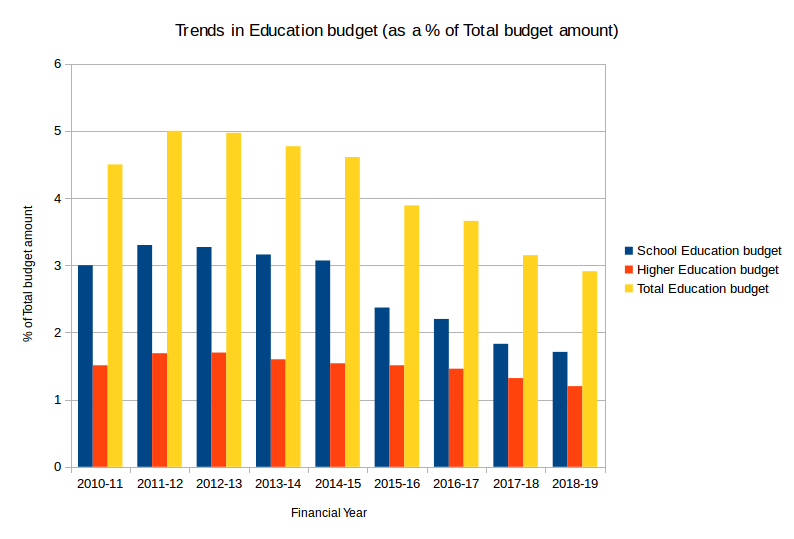
Source: www.indiabudget.gov.in
If public universities are now being brokered off in this manner, government schools have been facing the attacks at perhaps a larger scale, for a longer time now, and with relatively lesser resistance. Tens of thousands of schools are deliberately paid inadequate attention so that in a few years time they can be shut down citing under-performance, paving the way for mushrooming of private schools everywhere. Maharashtra, Chattisgarh and Uttarakhand have recently made news for shutting down over a thousand schools in one go.
Such attempts at gutting education, along with other welfare duties of the State, illustrate direct attack on the spirit of the Indian Constitution as envisioned by Dr. B.R. Ambedkar, and GATS is very much a part of this program.
Article XVI: Market Access
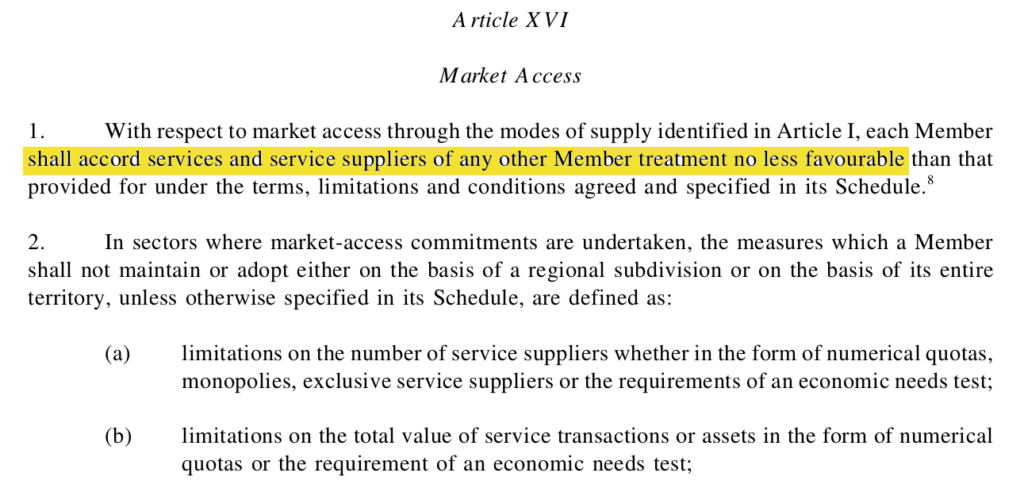 Several universities were granted “autonomy” this year. Which is ironic since at the same time, reduction in scholarships, increasing seat cuts and student loans, closure of departments, turning permanent posts into contractual ones, have been denying any sense of Autonomy for students and teachers. Most of the non-teaching jobs are completely contractualized, and the staff are intimidated against unionisation. In a condition like this the adulatory granting of “autonomy” basically reduces universities to “autonomously” raising funds, without State responsibilities, either through investments from corporates or increasing fees. As a part of this, GATS, a treaty that can freely override National, sectoral and institutional decisions, is projected somehow as an enabler of academic autonomy. This Autonomy that has been imposed on universities also includes throttling of student politics. In addition to straightforward banning of student unions and elections, student protests, or even basic student political welfare activities like help-desks during admissions, the Government has cut down the number of research seats, since research scholars in student politics have been one of the driving force of resistance across institutions. This served several purposes at once. One, the Government doesn’t have to shell money out on many research scholars. Two, without financial and institutional aid many students from marginalised backgrounds will be forced to abstain from research. Three, since research scholars have a longer stay and hence the possibility of a continued engagement with politics, this move ensures that the strength of student movements goes down.
Several universities were granted “autonomy” this year. Which is ironic since at the same time, reduction in scholarships, increasing seat cuts and student loans, closure of departments, turning permanent posts into contractual ones, have been denying any sense of Autonomy for students and teachers. Most of the non-teaching jobs are completely contractualized, and the staff are intimidated against unionisation. In a condition like this the adulatory granting of “autonomy” basically reduces universities to “autonomously” raising funds, without State responsibilities, either through investments from corporates or increasing fees. As a part of this, GATS, a treaty that can freely override National, sectoral and institutional decisions, is projected somehow as an enabler of academic autonomy. This Autonomy that has been imposed on universities also includes throttling of student politics. In addition to straightforward banning of student unions and elections, student protests, or even basic student political welfare activities like help-desks during admissions, the Government has cut down the number of research seats, since research scholars in student politics have been one of the driving force of resistance across institutions. This served several purposes at once. One, the Government doesn’t have to shell money out on many research scholars. Two, without financial and institutional aid many students from marginalised backgrounds will be forced to abstain from research. Three, since research scholars have a longer stay and hence the possibility of a continued engagement with politics, this move ensures that the strength of student movements goes down.
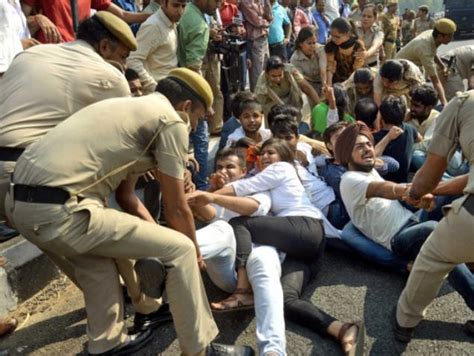
Occupy UGC Protest, 2015.
Photo courtesy: TheCompanion
Attempts to reduce the number of NET exams per year and the subsequent reduction in the awarding of JRFs also work towards the same end. Students have been one of the major reasons for the deference of permission for the complete commodification of education in this country, whereas Article XVI of the GATS document emphasizes the need for easy entry of member organizations into a Nation’s market. Governments are expected to do all they can to enhance and enable market access. One of the first implications of NEET is the creation of huge market to “p/coach” students for the entrance exam.
The market again gains the way it did and continues to do with the introduction of IIT-JEE. These classes try to emphasize the idea that coaching given in schools – private or public – is inadequate and hence more is required, while at the same time forcefully keeping historically marginalised sections like Women, Dalits, Bahujans, Adivasis and Muslims out of their classrooms. Many who somehow manage to enter these institutions, are also made vulnerable. The government by supporting the logic of this coaching industry, is leading to further privatisation of education – which is exactly what the WTO demands.
After several rounds of discussions over GATS, India has made many “offers” to the members of WTO. Even as the final commitments are to be made, many aspects of the GATS agreement can be seen implemented by various colleges and universities across the country. When India offers the final commitments, it will be bound to legally enforce the same. These commitments will become “irreversible”, and irrespective of which government comes to power, we will have to only aid the further liberalisation of our markets and commodification of education.
It remains unclear what kind of commitments India will eventually make, if it doesn’t abstain from GATS. But the principles that GATS holds dear are already being recommended by various committees on education and are being implemented too. The Birla-Ambani report on Higher education, TSR Subramanian committee report, Yashpal committee report, National Knowledge Commission report and the latest Narayana Murthy committee report on Corporate Governance are classic examples of Government police making in line with GATS. Whenever the recommendations that are anti-people in nature were implemented, students have religiously fought back. It is hence an opposition to the cherished dreams of GATS too.
Given that privatisation has had a long history starting even before this, it would be a fallacy to hold GATS alone responsible for the assault on education. One still remembers how the large scale protests post the institutional murder of Rohith Vemula exposed the casteist nature of University spaces yet again. This time it was difficult for the Government and “progressive” organisations to ignore the issue of caste. On the other hand, the successfully continuing protests at Aligarh Muslim University expose the stigma against Muslims that the ruling party harbours, especially in University spaces. The gender insensitivity and alleged sexual predation of various eminent professors, known otherwise for their “progressive” politics on campus spaces, became news last year with a list published by Raya Sarkar, a lawyer and researcher. Even as students at JNU, BHU and few other institutions launched major movements against gender-based harassment and discrimination in higher education, not enough steps have been taken to initiate investigations into the allegations, like the ones listed by Sarkar. Students at FTII, SRFTI, TISS, Central University of Kerala and Tamil Nadu have also in the recent past taken on the ruling powers on various policy issues crippling higher education. When several problems pertaining to the Indian academic space is already being battling by the students , an imposition of GATS will only further aggravate the situation. By putting up a strong resistance to NEET, closure of centers, seat cuts, tampering with the process of NET, autonomy, attendance and surveillance and other moves that lie in line with the logic of GATS, students have rejected several principles that form the basis of the GATS document.
Formations such as the All India Forum for Right to Education (AIFRTE) have come up in recent times, demanding “equitable system of education from KG to PG, … directly and fully funded by the state and which should be governed in a decentralized and participatory manner that optimizes diversity and minimizes inequality”.
Another common platform, the All India Council of Students’ Struggles (AICSS) was initiated last year, to discuss various different aspects of students struggles. Today AICSS has over 60 Organisations from over 15 states, including several Ambedkarite organisations, Islamic organisations, Women’s organisations, and Left organisations. In such a context, when students across the nation are raging against serious issues of various kinds inside educational institutions, GATS is one of the prime tools for the ruling classes to further intensify the oppression and the plunder. AICSS has scheduled their next meeting on the 16th and 17th of June at Pune, to discuss future struggle strategies and continue the fight against GATS and its several manifestations.
Kaushik Tekur just finished his Masters in English Literature from the University of Hyderabad and is a member of the All India Council of Students’ Struggles (AICSS). He can be contacted at kaushiktekur@gmail.com

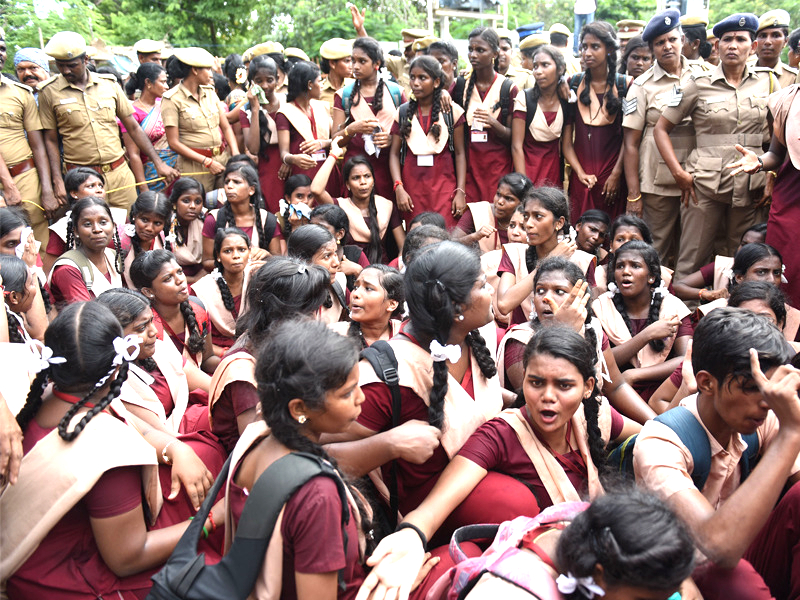

It is formidable just to exhibit the crippling and deliberate endangering of the higher education in lieu with the GATS(although thanks for this thick description over the boiling issues that have been compacted beliberatelky to stiffen the neck of HEI) ti haven’t found a comprehensive overall analysis of the info graph right now situation of the higher education. This is simply mind blowing, informative and shedding light in the future prospects. i’d like to Discuss this in great detail for formulating a future action plan. This need to be disseminated and stretch widely as long as possible. This is enthralling. I particularly liked your deep research over engulfing aspects of every day strugggles ?